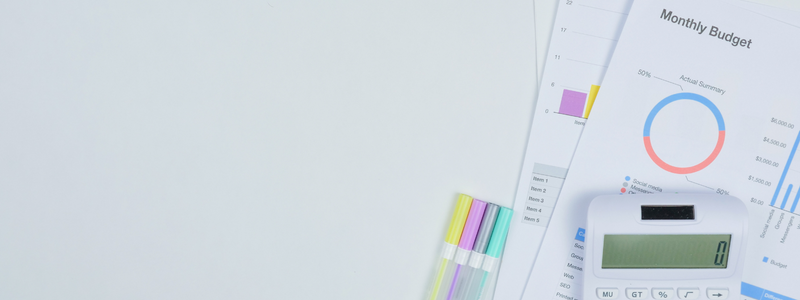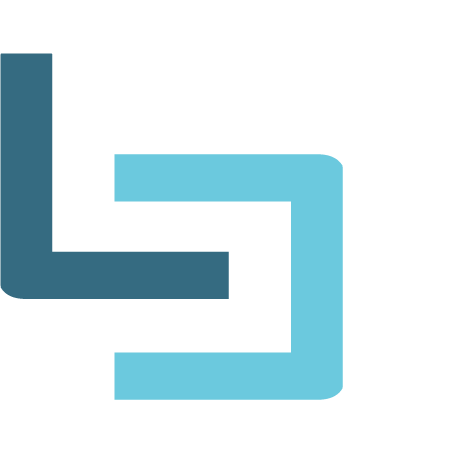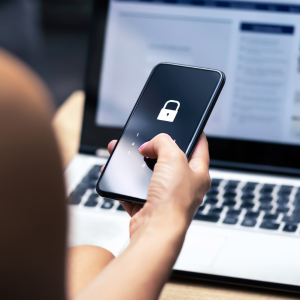
When it comes to our finances in this current market, times are tough. Groceries are getting more expensive, gas pumps are setting record prices and rent is getting higher and higher; everything seems to cost more. Yet few of us are seeing increases in income (employment, pension, or assistance) that match the rising cost of living – if we’re even seeing them at all.
The result is that for many of us our dollar is “stretched thin,” and we are forced to find ways to do more with what seems like less. This is what we call ‘inflationary pressure’. This doesn’t mean we have less money, we just have less left over to spend on things we want and need.
Some people have the ability to just “feel” their way through tough times, cutting back where and when it is necessary. But for others, it’s too easy to spend when you have cash in hand and then land in a tough situation when there’s nothing left, but your bills aren’t paid.
So what is the best way to manage your money so you can continue to pay your bills and put food on the table while getting those items you need and want, and having a little fun along the way?
Start a budget.
What is a Budget?
A budget is not a four-letter word. In fact, it can be your best friend if you do it right!
Simply put, budgeting is a way to prioritize the use of your money. It is a plan that, if followed closely, can help you get out of tight financial spots, plan for the future, and provide a buffer when emergencies arise.
The goal of budgeting is to put your financial situation into a visual perspective. By understanding the flow of what you have coming in each month, what bills and expenses must be paid (and when), and how much you have left over, you gain peace of mind knowing exactly what you have available at any time.
Ultimately, a budget should help you manage your money so you can keep, and save, as much as you like – at least after required bills and expenses.
Plan What to Budget
There is no one single approach to budgeting that will work for everyone, or one universally-accepted budgeting method. However, there are some best practices to consider when budgeting for your next 2 or 4 week period.
Personally, I make 2 budgets – one for the next 2 weeks, and one for the month. I start with the plan for the month and narrow it down from there.
I start by making a list of the things I need to pay, and the things I would like to get. Let’s start with the most common expenses most people need to pay:
- Rent or mortgage payment
- Cell phone bill
- Utility bill
- Credit card payments
- Vehicle payments
- Insurance
- Cable and internet
- And of course, food
If you have a pet, or a large family, there may be a number of things unaccounted for here. But, with proper budgeting, it can all be manageable.
Think Long Term, Plan Short Term
When planning for the month, I add all my planned expenses and subtract them from my two paychecks. This will be easiest for those with a set income to know what you’ll be bringing in over the month. If your income is more flexible, for example, if your hours vary each week, try to average your expected income as a benchmark to work with.
Once you have your monthly plan, it’s easier to adjust for a 2-week outlook. You can simply look at your next paycheck and divide all bills in half to get a more immediate look at your finances. Personally, I stay focused on the short-term to make it feel more manageable. But ultimately I am thinking long term, which is why I create a budget in the first place.
By understanding the cost of monthly necessities, I can set my base budget and assess what is left for wants, savings, and debt payments. It allows me to plan more long-term for things like saving for a vacation. I also have better control of my additional spending to ensure I have the ability to put money away for emergencies, or indulge from time to time.
What to Budget
The best starting point for your budgeting is to separate your outgoing funds into a needs and wants category.
What might go into your needs category:
- Rent/mortgage payments
- Groceries
- Credit card payments
- Cable/internet bill
- Cell phone bill
- Pet food
Items that are likely less urgent that can go into “wants”:
- New clothes or shoes
- Luxury personal hygiene items
- Household cleaning supplies
- New home decor
- Whatever you would consider treats – whether it be a nice item, jewelry, food, a night out, etc.
The items in your “want” category don’t have to be ignored, but you have to realize that there may not be room in your budget for them every month.
50-30-20
A great way to evaluate your budget is with the 50-30-20 rule. With this method, you set aside 50% for needs, 30% for wants, and 20% for savings or debt payments. It is not always easy to balance this method, especially with the rising cost of living, but it’s a good starting point to make sure your budget has some room for flexibility.
Personally I find myself exceeding the 50% on needs most months, especially as things get more expensive. In order to keep balanced, I reduce my 30% at the same rate I exceed the 50%. For example, if I spend 56% of my budget on my necessities, I reduce my 30% to 24% so I remain at an even 80%. This still leaves me with 20% allotted to savings, paying off debts, or flexibility to determine how to manage the “extra”.
Give Yourself Some Flexibility
I also allow myself some flexibility with this 20% as it is needed. Some months it goes all to savings, while other months it may get shared between needs, wants & savings. Regardless of the split, I always ensure I contribute to my savings each month. This allows me to work towards a vacation, a large purchase, or simply to be prepared in case of an emergency.
The important part to remember is not to beat yourself up if that 20% shrinks. The goal is always to make sure you meet your necessary spending first (bills & expenses), and then manage the remainder to best suit your desires.
As mentioned, my budget view is short term, but my focus is long term. As I pay down my credit card each month, my monthly minimum reduces with it. When my minimum decreases, so does the allotment of my budget to this expense. This in turn allows me to shift that portion of my budget elsewhere. Every additional amount towards paying off your debt helps to free up more funds next month to reallocate as you need. This is a great example of how working short term helps your long term goals.
How to Budget
Getting started can be the toughest part. Luckily, there are many great budgeting templates available online to help you get started. Try a search online or in your phone’s app store to see what suits you best. “Budgeting Template” or “Budgeting App” should help get you started.
To kickstart your search, I have included an example of how to budget below. Click on the link to access the file and download your own copy to adjust for your personal budgeting needs.
https://docs.google.com/spreadsheets/d/1-2UPtkM-TRhLAxsdzRINl5SI7lndkBGEmTw34epo2bs/edit#gid=0
For this example I used a single individual living in Ontario making an annual salary of $50,000. Simply save your own version of this example and you can adjust to match your personal situation.
With the categories provided, we can easily see our income from employment, and our expenditures that recur every month. Some of those expenses are fixed costs month to month, while others can certainly change depending on many factors.
The first step after making sure all your expenses are covered is to determine which are fixed costs and which are flexible costs. Your flexible costs don’t mean they aren’t necessary, but you likely have more options of how much to spend on them, and when.
Fixed costs generally consist of:
- Rent or mortgage
- A vehicle payment if you don’t own your vehicle
- Car insurance
- Any credit card payments due that month
- Necessary pet costs, such as food or medications
- Utilities such as heat, hydro and water
- Technology like cell phone, internet, and cable
Things like clothing, food, and personal hygiene items are considered more flexible. They are necessary, but not at a set monthly cost. You don’t need to buy new clothes every month, and you can adjust your food cost by eating out less and finding specials on groceries. Some may also consider entertainment in this category as it’s important to enjoy yourself when you can.
Budgeting Example
Using the budgeting template I created, this is how I would “work” the budget. (Please note this is not my actual budget, this is an example only):
- I know I am making $3,055 net pay each month based on 2 paychecks of $1527.50.
- My rent is $1,150, so with each paycheck I immediately put $575 into savings. This is the easiest way to ensure my rent is always covered no matter what other expenses arise. This leaves me $952.50 to spread out over the next two weeks, while my rent payment is safely tucked away. When it comes time to pay rent I just move that amount from my savings account back to my chequing.
- My bi-weekly car payment is $224 so I also immediately move that into my savings. I will move this amount back to my chequing the day before it is withdrawn. This now leaves $728.50 to use until my next paycheck.
- I choose to pay my $65 hydro bill so it is accounted for. This allows $65 extra in my budget from my second paycheck of the month.
- Next, I budget food for myself and for my cat. In a two week period I budget $125 for me and $75 for my cat (maybe a new toy for him as well). In the next two week budget cycle my food costs might drop to $75 for me and $35 for my cat, again providing me extra from my second paycheck. But for now, this leaves me with $463.50 to allocate to all other expenses and/or entertainment.
Looking Ahead
Now I look ahead to the next paycheck and two weeks following it. My first recommendation is to set up online billing and payments for things like your cell phone, hydro, cable, internet. Most companies offer online billing and allow you to pay on time, or sometimes early. Credit card companies are usually the same, while insurance most often sets up automatic withdrawals.
Aside from the previous expenses discussed, here is what I know I will need to pay later this month:
- Gas for the car
- $110 for insurance (vehicle and tenant’s insurance)
- $95 for cable/internet
- Cell phone bill of $70
- Credit card payment of $150 ($75 is the minimum required, but your goal is to pay it down!)
- $30 for one night out as self-reward
Without knowing an exact cost of gas, these remaining expenses equal $455. As you’ll see from before, this is nearly the entire $463.50 we have left right now.
DON’T PANIC!
Remember that these are expenses for the entire month and we are working with a single paycheck. Cut each of those upcoming payments in half and they feel more manageable.
You now have $55 for insurance, $48 for cable/internet, $35 for your cell phone and $75 to put towards your credit card balance. However, you likely aren’t cutting the cost of your night out in half. It may not be possible to make all of these payments in two parts, especially your insurance with an automatic withdrawal, but you can put the money into savings in two parts. This ensures it’s there when bills are due, but it doesn’t have to come all from one paycheck.
This total is now $213, which leaves $250.50 as “flexible” money to spend wisely. As mentioned above, $30 of that can go to a night out, and maybe $60 for your gas cost. That still leaves you with $160.50 for small emergencies and any additional small items you may need. For example, $20 on personal hygiene items, $10 on extra food or even $10 extra paid towards your credit card balance. Ideally still leaving you with $130.50 when your next paycheck arrives.
Paycheck #2
When your next paycheck arrives you will start from the top again. Account for the other half of your rent, car payment and food budget as well as your smaller monthly expenses. However, with your second paycheck you don’t need to cover your hydro bill, which means you’re starting $65 ahead.
If you were able to save the whole $130.50 from the first paycheck you are in a better starting position when you get your second paycheck. Maintain the same budget from the first half of the month and you’ll now have another $130.50 plus the $65 not needed for hydro. In just one month it would be possible to save $326.
Now, many things can happen and additional expenses can occur, but that $326 “nest egg” is yours to do with what you wish. You can save some, buy some new clothes, purchase that item you’ve wanted, pay off more of your credit cards – the possibilities are for you alone to imagine.
Contributing to the 50-30-20 Rule
This $326 can be part of the 20% I discussed earlier with a reminder that if it falls below that amount, there isn’t a need to panic. It just means you’ve successfully paid for all your “needs” and “wants” and you’ve got a bit leftover. As you pay bills down (for example, credit cards), you will not need to allocate as much each month and that additional income can be refocused to yourself or part of that 20% savings.
Keep in mind that every year, there are 2 months in which 3 paychecks arrive. What I do during those months is break rent into 3 saving segments, allowing me 2 months out of the year to pay down more of a credit card or purchase a few additional items that otherwise might take a few paychecks to save for!
Ways to Save
If you feel that your “wiggle room” is simply too thin, there are things you can do to help give yourself more of a buffer.
Food/Household:
- Use an online app like Flipp (for example) that allows you to comparison price shop for household items and food from all the major stores near you
- For many household items, the “Dollar Store” can save significant amounts of money
- Work out a meal plan for the next two weeks to avoid unnecessary eating out. You can use Google to find thousands of meal ideas to plan ahead and eat healthier
- Before you go grocery shopping, make a list of all necessities, and stick to it. This will ideally stop you from making purchases on a whim that aren’t needed in your meal plan.
Major expenditures:
- Cell Phones – shop around! A good first step is to call your current provider and ask if they have a less expensive plan. I did this recently and am now saving over $17 a month with more data, and better features. This equates to over $200 a year back in my pocket.
- Vehicle Insurance – use an insurance broker – they know of companies many of us have never heard of and can often save $100’s over the course of a year
- Cable/Internet – shop around! When I moved into my new place earlier this year, I found a company with a promotion that, even after it ended 6 months later, will still be almost $50 less than the major carriers. That’s $600 a year saved. That small savings adds up to a much larger amount over time!
- Credit Cards – if you have an excellent payment history, and have been with them for at least one year, contact them and ask for your interest rate to be reduced. The worst they can do is say no!
There are many ways to save, but I am hopeful even one of these ideas will help you find even a little extra during this time of “inflationary pressure.”
Key Budgeting Takeaways
If this post has helped in any way, I am glad. What I hope this article reminds us of is:
- Make a plan, and stick to it!
- Don’t panic
- Focus short-term, but think long-term
- Remember small amounts add up over time
In particular, don’t panic if you go slightly over your budget one month. Think about why! Maybe 4 or 5 regular household-use items all ran out at the same time (garbage bags, dish soap, freezer bags, toilet paper, and paper towels). Next month, maybe only 1 or 2 of those items need replacing, so you will probably be under budget next cycle.
Keep a perspective and remember that it is a marathon, not a sprint.



